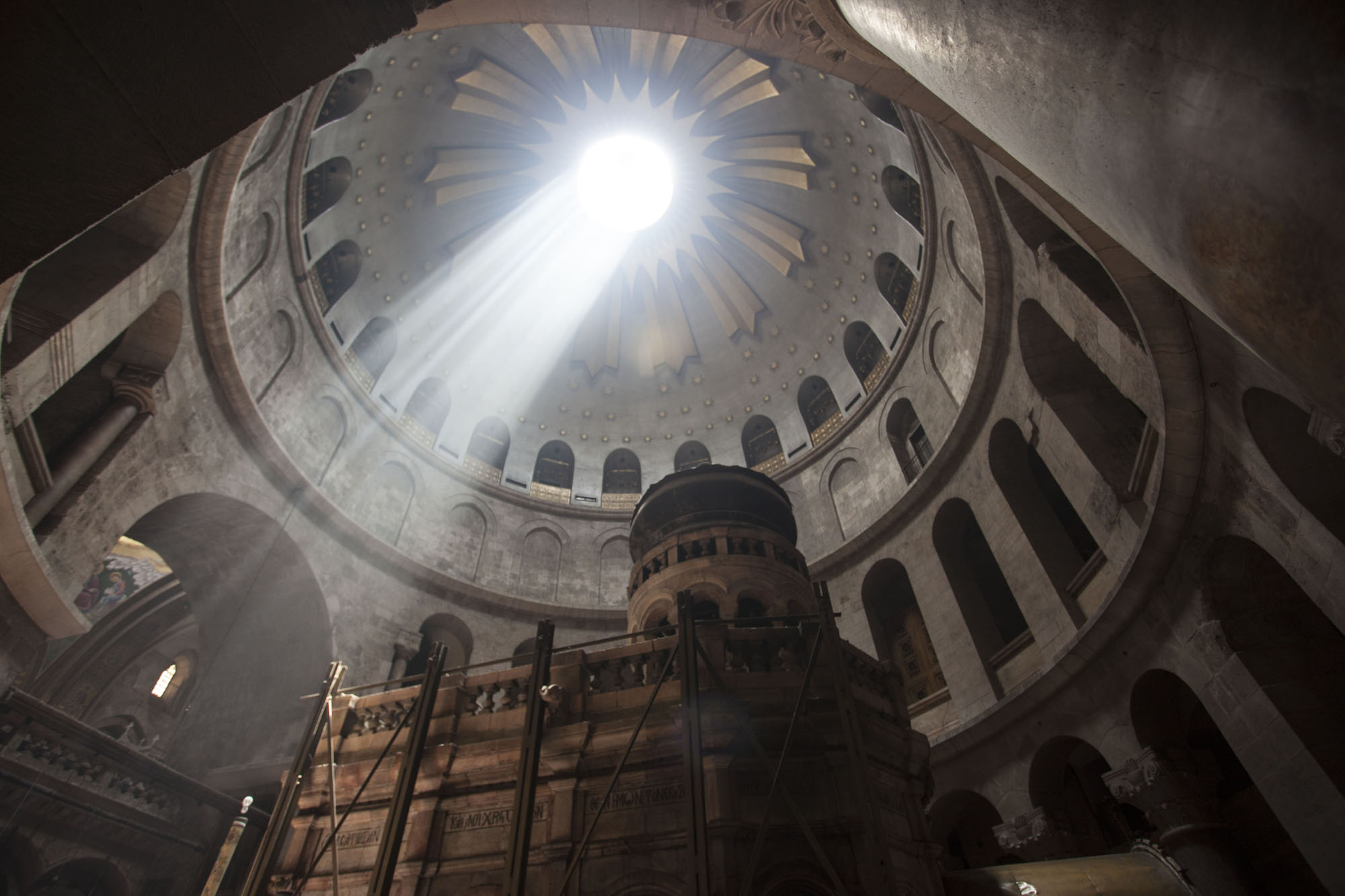
JERUSALEM (BP) — Scientific dating of ancient mortar in Jerusalem has added to what some scholars call mounting evidence the Church of the Holy Sepulchre was the site of Jesus’ tomb.
 “Obviously our faith does not rest in external evidences,” said Daniel Warner, associate professor of Old Testament and archaeology at New Orleans Baptist Theological Seminary, noting the Bible alone is humans’ infallible rule for faith and practice. But “it’s nice and comforting to know that what we’ve been claiming since the [time] of Christ … has always panned out.”
“Obviously our faith does not rest in external evidences,” said Daniel Warner, associate professor of Old Testament and archaeology at New Orleans Baptist Theological Seminary, noting the Bible alone is humans’ infallible rule for faith and practice. But “it’s nice and comforting to know that what we’ve been claiming since the [time] of Christ … has always panned out.”
In October 2016, scientists opened the shrine surrounding Jesus’ purported burial site in the Church of the Holy Sepulchre for the first time in centuries. Among their discoveries was an ancient limestone tomb surrounded by a marble slab.
Independent analyses by two labs released Nov. 28 by National Geographic confirmed that mortar between the slab and the tomb dates to around A.D. 345, approximately the same time Roman records indicate the tomb was enshrined to mark it as Christ’s burial site.
Warner told Baptist Press Christians living some 300 years after the resurrection likely would have had accurate records of significant sites in Jesus’ life — much like accurate records of sites in George Washington’s life still exist today nearly three centuries following his birth.
“As important as Washington was, think about what Christ did,” Warner said. “A guy who never went more than 50 miles from His house changed the course of the world … They knew what the site [of His burial] was” in the fourth century.
Warner noted the site of Jesus’ tomb cannot be pinpointed with certainty, but he said the “circumstantial” evidence is strong for the Church of the Holy Sepulchre as opposed to the so-called Garden Tomb, an alternate proposed site of Christ’s burial.
When researchers unearthed the tomb within the Church of the Holy Sepulchre last year, Southwestern Baptist Theological Seminary archaeologist Tom Davis told BP the Garden Tomb “is an Iron Age tomb (8th c. B.C.)” and therefore does not match Scripture’s description of Jesus’ burial place as “a new tomb” in the first century.
Stephen Andrews, an archaeologist who teaches Hebrew and Old Testament at Midwestern Baptist Theological Seminary, said most archaeologists who study Jesus’ burial location believe the Church of the Holy Sepulchre is a more likely site than the Garden Tomb. Some evidence, he told BP, suggests pagan Roman authorities in power before the fourth century built a shrine at what is now the Church of the Holy Sepulchre to desecrate the site because early Christians regarded it as the location of Jesus’ tomb.
The mortar dating announced this week, Andrews said, “does give credence to the account that [Roman emperor] Constantine’s delegation [in the fourth century] actually found this tomb and put a memorial there.” But “we still don’t know if it’s actually the tomb where Jesus was laid.”
Andrews stressed that “where the tomb is isn’t as critically important” because “we worship the person, the Son of God Jesus Christ, and not just the place where He was buried.”
National Geographic reported scientists also have detected physical evidence for reconstruction of the Church of the Holy Sepulchre burial shrine in the 11th century, when it was destroyed, and for a documented 16th-century restoration.















